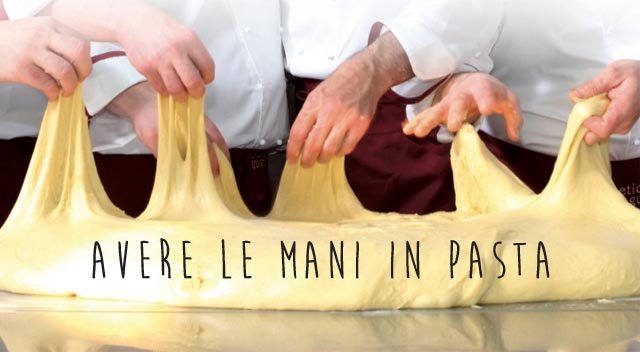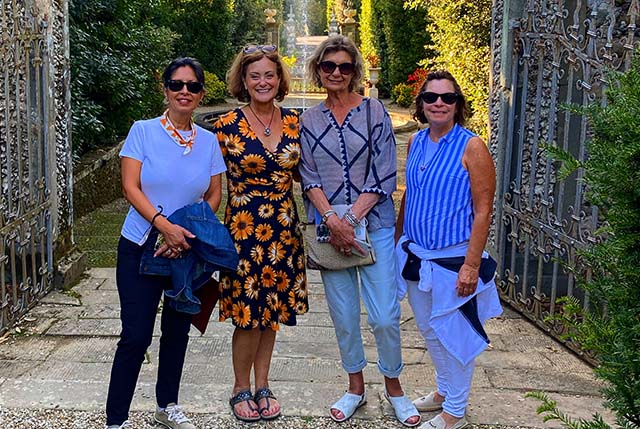
Padronanza dei pronomi dell’oggetto diretto italiano: il segreto scorciatoia alle conversazioni espressive!
Mastering Italian Direct Object Pronouns: The Secret Shortcut to Expressive Conversations!
Dove l’apprendimento incontra la dolce Vita! Studentessa Matta! Consigli di grammatica.
Where learning meets la dolce Vita!
Studentessa Matta Grammar tips.
Usare pronomi di oggetti diretti italiani è come prendere un treno diretto in Italia perché entrambi ti portano a destinazione più velocemente! Proprio come un treno diretto salta fermate inutili, questi pronomi ritagliano parole ridondanti, rendendo il tuo viaggio italiano più efficiente e divertente.
Using Italian direct object pronouns is like taking a direct train in Italy because they both get you to your destination faster! Just as a direct train skips unnecessary stops, these pronouns cut out redundant words, making your Italian journey more efficient and enjoyable.

Quando sei impegnato in una conversazione vivace o cerchi di trasmettere i tuoi pensieri per iscritto, i pronomi oggetto diretti italiani rendono le tue conversazioni più efficienti ed espressive. Ti permettono di evitare le ripetizioni e di parlare più fluentemente in italiano, risparmiando tempo e energia.
When you’re engaged in a lively conversation or trying to convey your thoughts in writing, Italian direct object pronouns make your conversations more efficient and expressive. They allow you to avoid repetition and speak more fluently in Italian, saving you valuable time and energy.
Pensate ai pronomi a oggetti diretti come scorciatoie linguistiche, che vi permettono di esprimervi in modo più efficiente.
Think of Direct Object Pronouns as linguistic shortcuts, allowing you to express yourself more efficiently.
Cosa sono i pronomi ad oggetto diretto?
What are Direct Object Pronouns?
I pronomi diretti italiani (pronomi diretti) sono parole che sostituiscono e fanno riferimento ad oggetti diretti in una frase. Gli oggetti diretti sono nomi o pronomi che ricevono direttamente l’azione di un verbo. Sono usati con verbi come vedere (vedere), conoscere (conoscere), chiamare (chiamare), sentire (sentire/sentire), volere (volere), Comprare (comprare), ecc.
Italian direct object pronouns (pronomi diretti) are words that replace and refer to direct objects in a sentence. Direct objects are the nouns or pronouns that receive the action of a verb directly. They are used with verbs such as vedere (to see), conoscere (to know), chiamare (to call), sentire (to hear/to feel), volere (to want), comprare (to buy), etc.
I pronomi DIRECT OBJECT italiani sono usati quando non c’è preposizione.
Italian DIRECT OBJECT PRONOUNS are used when there is NO PREPOSITION.
D’altra parte, PRONOMI OGGETTI INDIRETTI includono la preposizione “a.” Fare riferimento a questo post precedente del blog.
On the other hand, INDIRECT OBJECT PRONOUNS do include the preposition “a.” Refer to this previous blog post.
Singular Direct Object Pronouns:
Mi: Me
Ti: You
Lo: It replaces a masculine singular direct object. For example, “Vedo il libro” (I see the book) can be shortened to “Lo vedo” (I see it).
La: It replaces a feminine singular direct object. For example, “Mangio la pizza” (I eat the pizza) can be shortened to “La mangio” (I eat it).
Plural Direct Object Pronouns:
Li: It replaces masculine plural direct objects. For example, “Prendo i libri” (I take the books) can be shortened to “Li prendo” (I take them).
Le: It replaces feminine plural direct objects. For example, “Guardo le foto” (I look at the photos) can be shortened to “Le guardo” (I look at them).
Positioning of Direct Pronouns:
Direct object pronouns can be placed before the conjugated verb or attached to the end of an infinitive verb or present participle. For example:
Io prendo il treno per andare a Milano. (I take the train to go to Milan)
Lo prendo per andare a Milano. (I take it to go to Milan.)
Capisci quello che dico? (Do you understand what I’m saying?)
Si, ti capisco. (Yes, I understand you.)
Ci vedete? (Do you see us?)
Sì, vi vedo. (Yes, I see you all.)
Mangio la pizza. (I eat the pizza)
La mangio (I eat it).
Sto guardando le foto. (I am looking at the photos)
Le sto guardando (I am looking at them).
Voglio leggere il libro. (I want to read the book)
Voglio leggerlo. (I want to read it).
Positioning of Direct Pronouns
when using the past tense:
Using Italian direct object pronouns in the past tense requires a combination of the auxiliary verb “avere” (to have) or “essere” (to be) with the past participle of the main verb, along with the placement of the direct object pronoun.
In a construction using the past tense and a direct pronoun the past participle of the verb acts like an adjective and must be modified to suit the gender and number of the object.
Here are the steps to use a DIRECT PRONOUN with the auxiliary verb avere:

Dove hai comprato i tuoi libri?
Where did you buy your books
You want to answer that you bought them in Italy last year.
First, identify your needed pieces of information:
The past participle of COMPRARE: comprato
The correct verb conjugation: ho comprato
The object: LIBRI, masculine plural
The correct direct object pronoun for libri: li
The correct direct ending for the past participle: i
Li ho comprati in Italia l’anno scorso.
I bought them in Italy last year.
Other examples

Ho mangiato la pizza. (I ate the pizza.)
L’ho mangiatA. (I ate it.)
Hai visto il film? (Did you see the movie?)
Lo hai vistO? (Did you see it?)
Abbiamo comprato i biglietti. (We bought the tickets.)
Li abbiamo compratI. (We bought them.)

Ora che hai capito Pronomi Oggetto Diretto Italiano… esci e sii più diretti!
Now that you understand Italian Direct Object Pronouns… get out there and be more direct!
Buon Viaggio Linguistico!
Have a great linguistic journey!
Compito utilizzando pronomi oggetto diretto
Homework using Direct Object Pronouns

Questi esercizi ti aiuteranno a fare pratica usando correttamente i pronomi dell’oggetto diretto italiano in vari contesti.
These exercises will help you practice using Italian direct object pronouns correctly in various contexts.
Fill in the Blanks with the Appropriate Definite Article and then Direct Object Pronoun (Singular)
Esempio:
Marco ha il libro interessante. (Marco has the interesting book.)
Marco l’ha. (Marco has it.)
Marta vuole mangiare ___ pizza. (Marta wants to eat the pizza.)
_____________________ (Marta wants to eat it.)
Guardo ___ film d’azione. (I am watching the action movie.)
_____________________ (I am watching it.)
Luca ha visto ___ amico ieri. (Luca saw his friend yesterday.)
_____________________ (Luca saw him yesterday.)
Teresa ha trovato ___ chiavi? (Did Teresa find the keys?)
_____________________ (Did Teresa find them?)
Anna legge ___ giornale ogni mattina. (Anna reads the newspaper every morning.)
_____________________ (Anna reads it every morning.)
Stasera, cucineremo ___ pasta. (Tonight, we will cook pasta.)
_____________________ (Tonight, we will cook it.)
Ho comprato ___ vestiti nuovi. (I bought new clothes.)
_____________________ (I bought them.)
Paolo mangia ___ mele. (Paolo eats the apples.)
_____________________ (Paolo eats them.)
Abbiamo visto ___ film fantastici. (We saw fantastic movies.)
_____________________ (We saw them.)
Martina ha preso ___ libri dalla biblioteca. (Martina took books from the library.)
_____________________ (Martina took them from the library)
Avete letto ___ lettere? (Have you read the letters?)
_____________________ (Have you read them?)
Gli studenti ascoltano ___ professori attentamente. (The students listen to the professors attentively.)
_____________________ (The students listen to them attentively)
Ho incontrato ___ amici al parco. (I met friends at the park.)
_____________________ (I met them at the park.)
Le ragazze ballano ___ canzoni preferite. (The girls dance to their favorite songs.)
_____________________ (The girls dance to their favorites.)










